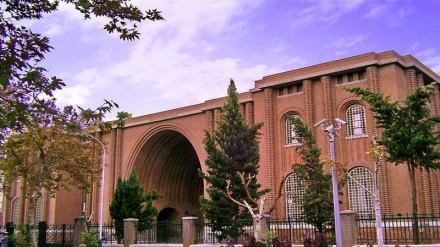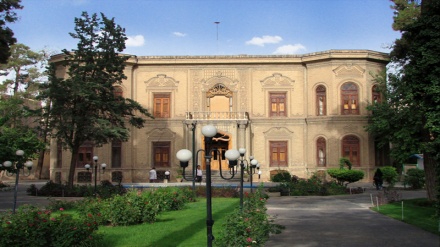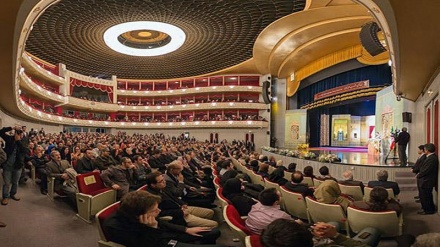Iran Your Attractive Destination (203)
Welcome to the 203rd weekly episode of the series Iran Your Attractive Destination. Today, we become familiar with some of the historical and tourist attraction sites of the city of Shahr-e Rayy.
As a reminder, in the previous episode we became familiar with the historical background of the city of Shahr-e Rayy in the pre-Islamic and Islamic eras and pointed out that upon the acceptance of sacred religion of Islam, this city covered the path to progress and development. The city of Shahr-e Rayy was Iran’s political and cultural center throughout the rule of Bouyad Dynasty in Iran, which in turn lead to promotion of sciences and literature in this city, and turned Shahr-e Rayy into the cradle of countless scientists, literary figures, and poets. Today, we brief you on the history of the city of Shahr-e Rayy in the Islamic era.
It is worth noting that the era of promotion of sciences and literature in the city of Shahr-e Rayy did not last long, and this city faced countless upheavals upon its seizure by Sultan Mahmoud Ghaznavi. Sultan Mahmoud ruthlessly massacred Shias. On his order, the leading Shia figures were hanged, and Shias were sacked from administrative jobs. This ruler’s forces set ablaze many of the books, which were kept in the library of Saheb ibn Ebad, while transferring the rest of these books to the capital of Gaznavid Dynasty, Khorasan. Although the city of Shahr-e Rayy was largely destructed in the wake of raids staged by Gaznavid troops in 11th Century AD; it was reconstructed during the rule of Saljuqid Dynasty.
In the year 434 AH, this city was conquered by Saljuqid troops, while the Saljuqid ruler, Toqrol, upon entering the city of Shahr-e Rayy ordered the transference of the capital from Nayshapour to this city. At this point in time, upon the instruction of this Saljuqid ruler, new buildings were constructed; one of which is Toqrol Tower that has remained in this city to this day.
In this period of time, Iranian arts were thrown under the spotlight. The pottery industry was at the peak of its beauty and development in the Saljuqid era, while ceramic and enameled dishes, covered with beautiful paintings were produced in that period of time.
In the Saljuqid era, several schools were also constructed in Shahr-e Rayy. In addition to schools, this city was also home to many mosques and tombs. During the rule of Khawrazmshahian Dynasty, Shahr-e Rayy was considered as one of Iran’s important cities till the raid of the city by Mongol troops. In the year 617 AH, Mongols massacred the residents of the city of Shahr-e Rayy and pillaged this city. They mounted their atrocities by abducting a large number of residents to use them as human shields and to send them to battlefields. The history of Mongols illustrates that they chose the city of Shahr-e Rayy as their recreational hub. Meanwhile, once again in the year 786 AH, Shahr-e Rayy was leveled by the troops of Timur. The ruins of the ancient city of Shahr-e Rayy remain in the vicinity of present day city of Shahr-e Rayy.
Upon the instatement of Safavid Dynasty in 17th Century AD, the city of Shahr-e Rayy captured the attention of the rulers of this dynasty as a religious city. Although upon the instatement of Safavid Dynasty, this city developed and its population increased, it never managed to reestablish its previous grandeur. With the selection of Ghazvin and later on Isfahan as Iran’s capital, these two cities developed further. However, the city of Shahr-e Rayy didn’t expand as such. Throughout Afghan raids, and especially during the rule of Afshariyeh Dynasty, which saw its development in mounting taxes and wars, the city of Shahr-e Rayy went on a downward spiral. However, throughout Zandieh era, this city once again grew and developed. Later on in history, upon the decline of this city, Tehran which was a village in the six-kilometer distance of Shahr-e Rayy started to swiftly grow, such that the founder of Qajarid Dynasty, Aqa Mohammad Khan Qajar, chose Tehran as the capital of his ruling system. Currently, Shahr-e Rayy is a city in the vicinity of Greater Tehran, and is home to Hazrat Abdul-Azim Holy Shrine, in addition to the Shrines of Imamzadeh Taher and Imamzadeh Hamzeh, which are host to thousands of pilgrims and devotees of the Prophet of Islam’s Infallible Household (Peace be upon them). After the holy cities of Mashhad and Qom, the city of Shahr-e Rayy is the third largest religious city in Iran. Moreover, this city is home to 198 historical and Islamic monuments.
The historical monuments of Shahr-e Rayy are of significant importance for archeologists. Given the rich historical background of this city throughout the pre-Islamic and Islamic eras, Shahr-e Rayy accommodates many valuable historical monuments, including the ruins of Parthians’ Palace, Toqrol Palace, a Zoroastrian Temple, Cheshm-e Ali Hill, Shahr-e Rayy Rampart, and Bibi Shahrbanou Tomb.
One of the most ancient historical monuments of the city of Shahr-e Rayy is the remains of an ancient building which dates back to Sassanid era. It is situated on a hill. In accordance to historical documents, this building is Shahr-e Rayy Zoroastrian Temple, which was razed to the ground upon the order of Alexandria of Macedonia.
Cheshm-e Ali Hill is also of historical significance in the city of Shahr-e Rayy. Ceramic items dating back to seven thousand years ago have been unearthed during the archeological excavations in this historical site; some of which are currently kept in museums in Iran and other parts of the world.
Shahr-e Rayy Rampart is a defensive wall, which was constructed in the Parthian era, surrounding this city. This wall fully existed in the Sassanid and Islamic eras and was used as a solid shield against enemy raids. However, the most destructive blows were dealt against this defensive wall in the wake of the attacks waged by the troops of Sultan Mahmoud Ghaznavi, and Mongol kings. A part of this wall has been renovated after the victory of the Islamic Revolution and in recent years.
Toqrol Tower is another historical monument in this city. It is the tomb of Toqrol Baig, the last Saljuqid king. The height of this tower stands at twenty meters. This tower was renovated in the year 1301 AH, upon the order of the Qajarid King, Naser Ed-Din Shah. This tower maintained an inscription in Kofi language, which has been destroyed throughout the renovation of this tower in the Qajarid era.
On the southern foothills of Shahr-e Rayy, over a rocky mountain, there is a building which locals believe is the tomb of Bibi Shahrbanou, the venerable mother of 4th Infallible Imam of Prophet of Islam’s Household, Imam Sajjad (Peace be upon him).
The main courtyard of this tomb is divided into two segments. The main building of the tomb is made of plaster and stones, while its shelves are made of bricks. Its architectural style shows that the core of this building has been constructed in the Sassanid era.
In the northern corner of this tomb, there is a mosque which dates back to Qajarid era. In the northern side of this courtyard there is chamber for residence of guests and pilgrims.
MR/ME


